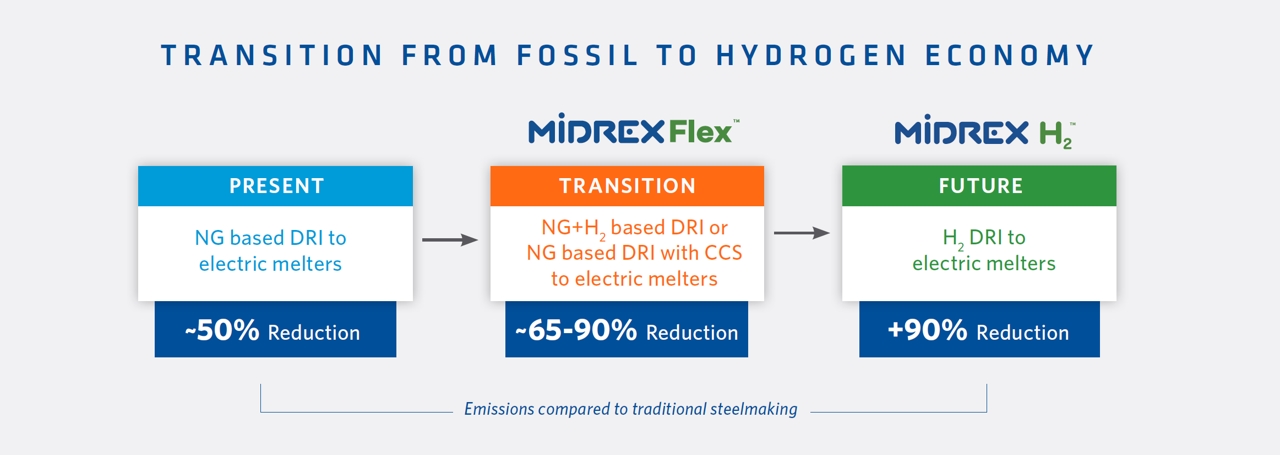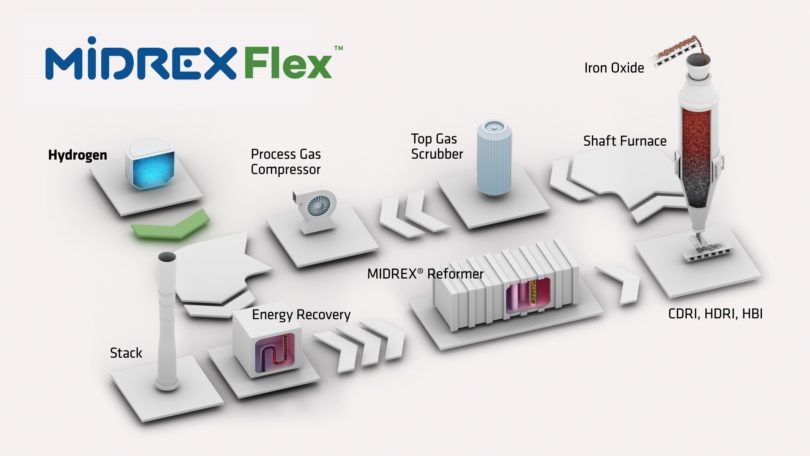As global efforts intensify to reduce CO2 emissions, MIDREX offers scalable solutions for transitioning towards sustainable ironmaking practices. Dive into this article from Geoff Wallwork, Midrex's Global Solutions Principal Engineer.
The MIDREX® plant is extremely flexible and can accommodate the initial transitions from a carbon to a hydrogen economy.
Decarbonization is key to the sustainability of the steel industry, and direct reduction is the only proven way to lower carbon monoxide (CO2) emissions in the vital ironmaking step. The use of green hydrogen is the ideal solution for reducing CO2 emissions, but when it will be available in sufficient amounts and at a competitive price is uncertain. We need ironmaking technology that can adapt to a changing energy landscape.
MIDREX® Direct Reduction Process solutions are available to allow steelmakers to adapt to the Hydrogen Economy at their pace. Clean-burning natural gas (NG) can be used immediately in a MIDREX Flex® plant (50% or more of the reformed reducing gas composition is hydrogen, H2). As sufficient quantities of hydrogen become available at competitive prices to other energy sources, a MIDREX Flex plant can be easily modified to operate with higher percentages of H2 up to 100% NG replacement.
For additional details, please read our Technical Brochure.
For greenfield plants designed specifically for up to 100% hydrogen operation, see MIDREX H2 technology.


Featured Plant

thyssenkrupp Steel Selects MIDREX Flex® for Immediate CO2 Emissions Reduction
> Plant designed with flexibility to operate at different ratios of natural gas and H2, up to 100% H2
> Based at Duisburg, Germany
> First green iron: Q4/2026
> Capacity: 2.5 million t/year of DRI
> Products: Hot Metal and Granulated Slag
READ PRESS RELEASELooking to understand Thyssenkrupp Steel tackles sustainability?
Explore Thyssenkrupp Steel’s Climate Strategy page to delve into their approach to reducing carbon emissions and their commitment to environmental stewardship. Discover how they’re shaping a greener future. Visit now: Thyssenkrupp Steel’s Climate Strategy
Direct From Midrex
Fueling the Future of Ironmaking: MIDREX Flex™


